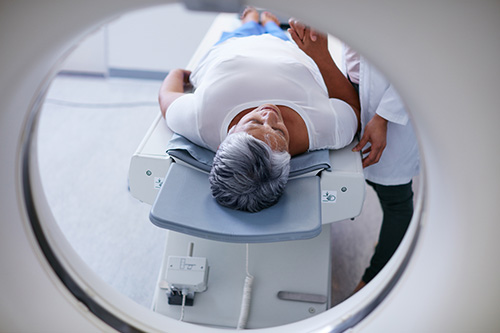D&C and hysteroscopy are common minimally-invasive surgery procedures often used together to remove abnormal or unwanted tissue from inside of the uterus. D&C stands for dilation (sometimes called dilatation) and curettage and hysteroscopy is procedure that lets your doctor look inside your uterus to diagnose and/or treat uterine issues.

D&C and hysteroscopy may be performed for many reasons, including the diagnosis, evaluation and treatment of conditions such as abnormal bleeding, polyps or certain types of fibroids that are found in the uterus.
What are common reasons for a D&C and hysteroscopy?
D&C and hysteroscopy may be used for the following:
- Abnormal uterine bleeding such as heavy menstrual flow
- Fibroids
- Polyps
- Uterine cancer
- Removal of tissue after a miscarriage
- Removal of placenta after childbirth
- Termination of pregnancy
Done under general or local anesthesia, D&C and hysteroscopy can be performed either together or separately. These procedures may be a less invasive option for women who don’t choose or want to have a hysterectomy or partial hysterectomy.
If you think you might need a D&C and hysteroscopy, we recommend you talk with your healthcare practitioner to get more information and to make sure that this alternative is right for you. It’s good to ask a lot of questions so you and your practitioner can decide together how to proceed.
What is a D&C?
D&C is a medical treatment performed by a doctor who dilates a woman’s cervix and then inserts a thin instrument called a curette in order to scrape the endometrial lining from the uterus. The “D” is short for dilation (opening) of the cervix, while the “C” refers to curettage, or the scraping portion of the procedure.
Doctors may use a D&C to help them find the cause of an issue such as unusual bleeding. Some or all of the tissue is removed for laboratory evaluation, or to rule out abnormal cells or tissue development. Medication or medical instruments are used to dilate the cervix for this procedure.
D&C can be done without the use of the light and camera of a hysteroscope. D&C may be performed after a woman has a miscarriage in order to remove any remaining tissue from the uterus and to prevent infection. D&C is also used to remove the uterine contents and remaining tissue after an abortion.
The actual D&C may only take about 30 minutes, although it may require a stay of several hours in the doctor’s office, clinic or hospital for recovery after the procedure.
What is a hysteroscopy?
The hysteroscopy technique allows a gynecologist/surgeon to visually evaluate the lining of the uterus. This is done with a thin lighted tube and camera that is inserted through the vagina up through the dilated cervix to the uterus.
Hysteroscopy can be used by itself to diagnose issues in the uterus. In addition, it can be used while a D&C or laparoscopy (surgical insertion of thin, lighted tube to find and diagnose uterine problems) procedure is being performed to help obtain more information about any issues with a woman’s uterus.
What happens after a D&C and hysteroscopy?
Most women who have a D&C and hysteroscopy will be able to go home the same day, although someone else will need to accompany and drive them. In the next few days, women may experience mild cramping or slight bleeding due to the procedure and the recovery that follows.
If you have a D&C and hysteroscopy, your doctor or other healthcare practitioner should:
- Tell you what to expect and plan for ahead of time
- Give you a list of care instructions
- Alert you to any signs to watch for that indicating you need to be seen by a doctor, such as a high temperature or heavy bleeding.
Women who have a D&C may wonder if and when they will be able to become pregnant. Most women who have a D&C will not have any problems becoming pregnant, though this is something to be discussed with your doctor. Many practitioners suggest women wait until they have experience one normal menstrual period before they begin trying to become pregnant.
What are the risks of a D&C and hysteroscopy?
As with any surgical procedure, there are some risks with D&C and hysteroscopy, although complications do not occur often. Possible complications include bleeding, infection, scar tissue formation or damage to the uterus if it is perforated by the surgical instrument.
We encourage you to talk about these and any other risks that may be present due to your personal situation and health history with your doctor in preparation for the surgery and after. If you plan to have general anesthesia, immediate recovery may take a few hours longer.
The choice that’s right for you
D&C and hysteroscopy may be the best choice for you – or there may be other alternatives you want to consider. You can learn more about some of them our article Hysterectomy and partial hysterectomy options & alternatives.
We believe that the most important thing to remember is that you are the best person to make the right choice for your body. As long as you have all the information you need, that’s the best approach for most surgical procedures.
Relieve your hormonal
imbalance symptoms today
- For perimenopause and menopause symptoms
- Natural and easy-to-take
- Satisfaction always guaranteed











